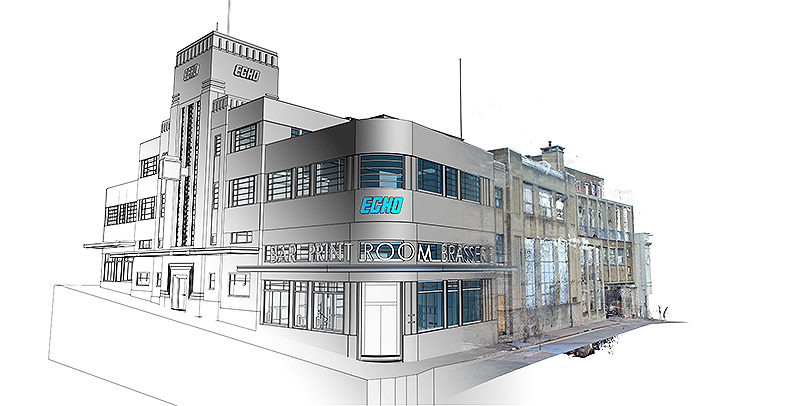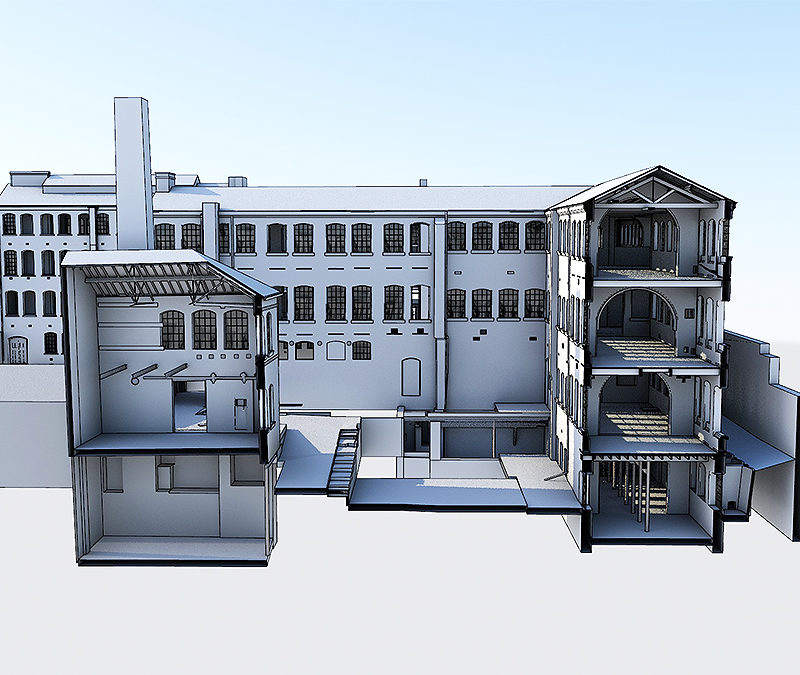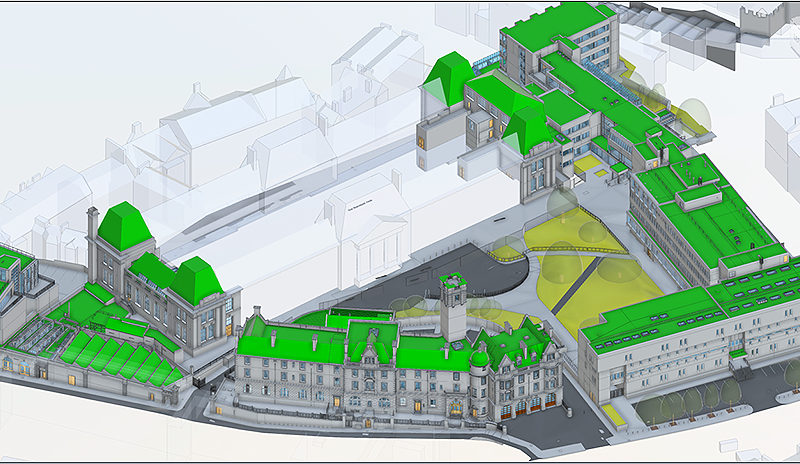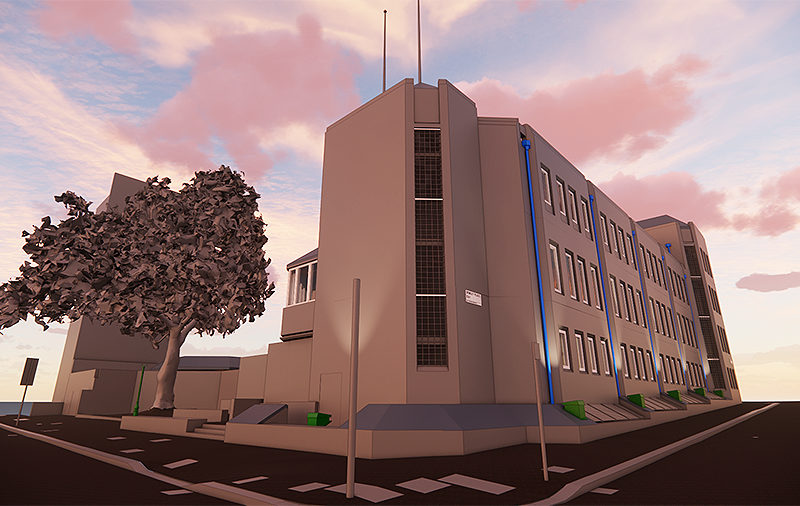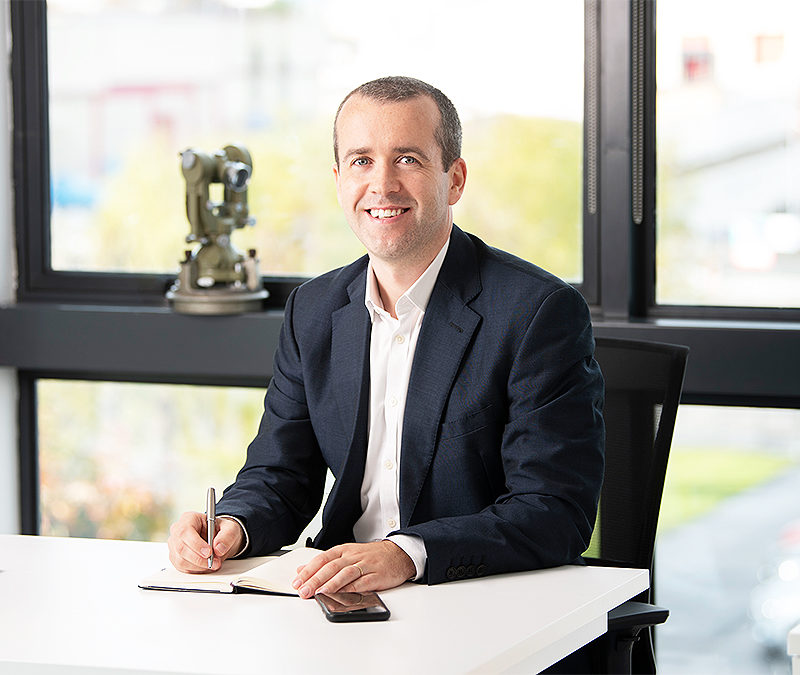Diarmuid Murphy, Director of Property at Murphy Geospatial, explains why asset owners on the journey to decarbonisation should invest in a digital twin.
Murphy Geospatial
2023 was a year that seemed as if it was rarely without weather warnings. As we saw more instances of extreme heat, flooding and cold, the question as to whether our buildings were fit for purpose was raised more frequently. The construction and property sectors are also preparing for legislative changes that will come into effect in the not-too-distant future. It certainly feels that the pressure to decarbonise our built environment is increasing to face up to the climate change impact in real time, as well as new regulation.
In the UK, homes will soon be subject to whatever is outlined in the 2025 Future Homes Standard. From April 2023, it became unlawful in the UK for commercial buildings to let or continue to let a commercial property with an EPC rating of ‘F’ or ‘G’.
In Ireland, the property and construction sectors are adapting their operations following the European Parliament’s publication of two new directives, the Energy Performance of Buildings Directive and the Energy Efficiency Directive in March 2023. The corresponding legislation mandates that all new buildings occupied, operated or owned by public authorities must be Zero Emission Buildings from 1st January 2026, and that any new leases must be for NZEBs – this will significantly impact state decision making.
What’s clear is that for asset owners on the long journey to decarbonisation, there will always be room for improvement. Whether that’s due to the technology available at the time, the resources available to invest or changing legislation, it will never be ‘job done’. This makes it tricky to know where to prioritise investment given the complex nature of buildings and infrastructure. Digitalisation offers a cost-effective opportunity for asset owners and managers to understand the impact of proposed changes without putting a spade in the ground. The method that shows increasing promise is a digital twin.
The digital twin and how you use it
A digital twin is a living digital representation of the built environment or asset. Not just a moment in time, a digital twin is fed live data using IoT sensors. Digital twins are underpinned by geospatial data; collected, verified and analysed by geospatial experts and other stakeholders to create an indistinguishable virtual model. This digital twin allows multiple operatives to collaborate, including reviewing options for decarbonisation; allowing asset owners to model different solutions, adaptations and improvements, and to test how these would function in the real world. Not only will the digital twin facilitate the process of retrofitting and refurbishment when decarbonising assets, but it will also prove to be an asset for facilities managers. With an intuitive digital twin, facilities management can be automated, made more efficient and responsive to the changing needs of the building, including reduced footfall and changing weather conditions.
The role of the digital twin in decarbonisation
Many asset owners and managers are now mandated to report on their ESG performance regularly to investors, banks, boards, Governments and employees, with a new level of detail. This can mean tracking and reporting their carbon emissions, alongside other performance indicators monthly. Without an accurate starting point, it’s difficult for an asset owner or facilities manager to demonstrate any improvement.
Energy generation, consumption and conservation is often one of the most carbon-intense elements of business operations in the built environment and, therefore, often the first consideration in most environmental plans. Whether asset owners are looking at changing how power is generated, consumed or conserved, adaptations to address these business activities require an understanding of existing infrastructure to determine a) what’s possible and b) what’s best.
Project teams can only design and install closed-loop renewable energy systems – whether that’s ground-source or air-source heat pumps, PV panels or energy storage batteries – if they understand how and where current services operate. They need to know exactly where the pipes and cables are, the depth of the foundations, the size of the rooms they’re trying to heat, cool or light up – there are a lot of variables to consider.
An architect cannot decide how thick they can make a building envelope, or how much insulation they can add, without accurate measurements of the existing layout. These questions of what exactly can be found where, and what’s possible next, can be answered using a digital twin informed by accurate geospatial data. Thanks to the technological advances we’ve witnessed in the last few years, it’s also now possible for surveyors to collect more detailed data at higher speeds so it’s easier to explore alternative options as problems arise.
A new way of working
Building and infrastructure renovations and retrofitting – which are essential steps for the built environment to decarbonise – have previously been viewed as costly, time consuming and something considered once every other decade at most. The demands from Government, clients, citizens and what products are available in the market will continue to change, and those who invest in a digital twin so they can be agile and accurate in their decision making will reap the rewards.
A digital twin used on an ongoing basis will also take away the need for the lengthy preparations that usually correspond with putting together proposals to adapt buildings or infrastructure. Simulating changes in a digital twin means any work you propose is more likely to succeed both on time, on budget and with the project outcomes you wanted – that’s the sort of surety that appeals to investors, too. A digital twin also has its own value, becoming an intangible asset for the owner with a full service history that is backed by consistent data.
Whilst the job of decarbonisation may never be ‘done’, a digital twin offers the agile environment the property and construction sectors need to understand their current baseline, to test and execute changes and, importantly, to measure and report on success.




